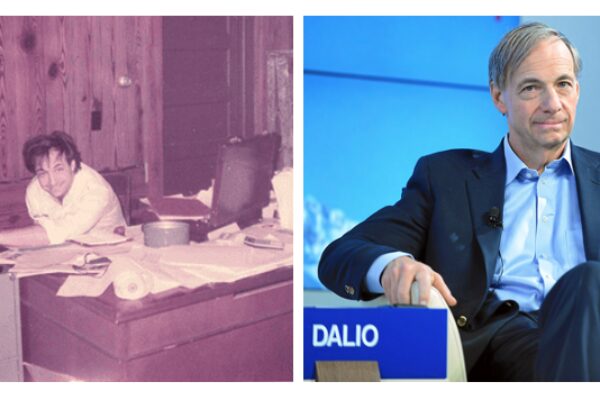
Of all the systems relating to talent that I’ve ever had a hand in developing, the most powerful was a system we developed at Katzenbach Partners called “the retention tree.” The system is extremely simple, and this short post includes everything you would need to implement it yourself.
The context: Katzenbach Partners hired many people right out of school, selecting them in significant part for their extreme diversity of interests. Unsurprisingly, although satisfaction with the work and with the firm were generally high, after a couple of years, many people left the firm for other kinds of opportunities. In the history of the firm, we never lost one of our people to a direct competitor, but people routinely left for destinations that ranged from start-ups to non-profits to corporate roles to family businesses, as well as to pursue schooling of many kinds. My partners grew increasingly worried about attrition and pressed for us to set a target for retention. After some reflection, we did the opposite: we focused entirely on the “how” of retention, allowing the right outcomes to emerge from that. Here’s the approach we used.
The Retention Tree
We don’t believe it is necessarily a problem to lose a person we’d wish to keep. However, each time someone who is performing well departs, we check ourselves by asking three questions:
- Did we have an open dialogue with that individual about their dreams, priorities and concerns, the different kinds of opportunities they were thinking about on the outside, and what might be possible for them within the firm?
- Did we think creatively and well about the best way for that individual to realize their aspirations within the firm, and identify specific things that would make a positive difference?
- If we made any commitments based on this dialogue, did we fulfill them?
We think of these three questions as a “tree”: if yes to the first, yes to the second, and then yes to the third, we’ve done the right things; and if no on any “branch,” we’ve failed. Note that second point doesn’t mean that we should try to do things that don’t make sense to our business – we have a strategy to execute, and what makes sense to do can’t be reinvented for each individual – but rather means that we should think creatively about how to address what individuals care about within the frame of what will advance the objectives of the firm more broadly.
It might be that we find that we’re losing more people in certain kinds of roles than we can afford to lose, even though in each case we can answer the three questions affirmatively. In this case, as we apply after-action reviews, we’ll generally see that there’s a structural problem of some kind: we haven’t defined that role well, or a part of our organization is working poorly, or we’re targeting the wrong people in our hiring process who value things that we can’t provide more than they value the things we provide best. Once we see those structural problems clearly, then we can go about fixing them.
We record for each departure whether these three conditions were met. If yes on all three, then the departure is a “green.” If basically yes but there were missed opportunities to think more creatively (question 2), then a “yellow.” If no on any of the three, then a “red.” We track the percentage of departures that are green at the firm level, and as part of our transparency about firm performance, even share the green/yellow/red synthesis for each departure.
It took us about a year to use the retention tree as a fulcrum to change an important aspect of our culture. We showed, through action, that every time someone had a proactive conversation with us about outside opportunities, something good happened. We referred people to others in our networks, had mentoring conversations that included a balanced discussion of the pros and cons of staying versus seeking different kinds of opportunities outside, staffed people in ways that positioned them to achieve their long-term goals, and so on. At first, people were skeptical that it could be “OK” to come to a senior firm member to talk about wrestling with whether it made sense to pursue a different career direction. Within about a year, this became normal. We continued to lose plenty of people, generally because their own personal goals really were better served by taking their career in some different direction – one of my assistants became a radio personality, one of our associates took over his family’s vineyard in South Africa, an engagement manager took the leap to start a multi-brand lingerie retailer in which several of us invested. But there were others who thought they should leave partly based on an underestimation of the opportunities they could have inside the firm. Even though we never made counter-offers, we kept many of them. We benefitted greatly, as well, from having good visibility on who was likely to leave and when that might happen – so we didn’t suffer the costs of being blindsided that plague most companies.
By the time the firm reached a hundred people and the norm of open conversations about opportunities on the inside and the outside had fully taken hold, more than 90% of our departures were “green”: we’d had the right dialogues early, we’d been thoughtful about how we could best help the individual achieve what he or she valued, and we delivered on our promises. Certainly this led to better retention rates than we would have had otherwise, but more importantly, it created an environment in which everyone felt they had the support of their colleagues to achieve their personal aspirations and a magnet for new talent.
I’d love to hear from anyone who adopts this approach, or who has invented something similar. There’s nothing complicated about this. When the head of HR of a Fortune 100 asked me to share more about what we did, I pointed out that he shouldn’t need any outside design help – there’s no machinery here, just a process of engaging in dialogue and following up. However, there is one important cautionary point to note. If anyone is in fact disadvantaged by being transparent about his or her thinking, the trust that makes the system work breaks down. The “retention tree” can only work if there’s an absolute commitment to live by the norm that when someone shares their aspirations, they will always be helped in some way and never be harmed. At Katzenbach, Liz Mahoney (now Liz Kase), our first head of People, co-developed the system with me, and she and her successor, Shanti Nayak (now a colleague at Incandescent), played a critical role in keeping us to this high standard – and immediately addressing any slips.
The most valuable management systems are in equal parts simple and exacting. They embody the disciplines that make us better. The retention tree taught us a great deal about how to build a better firm – about the value of communicating the essence of what we should expect from one another and about the power of placing the firm in service of each of its members.



